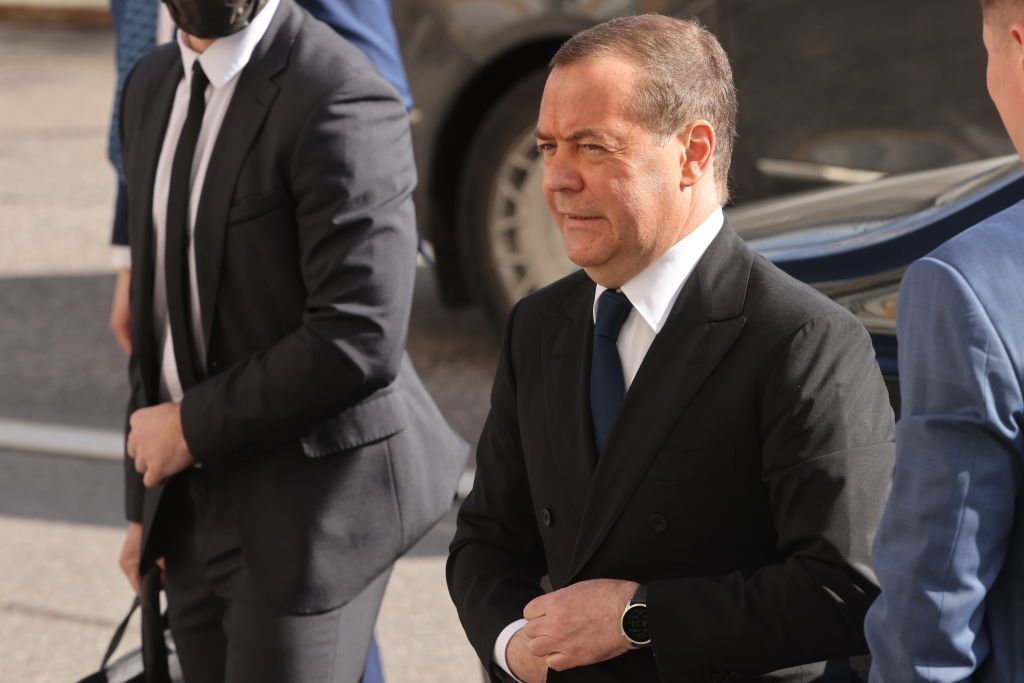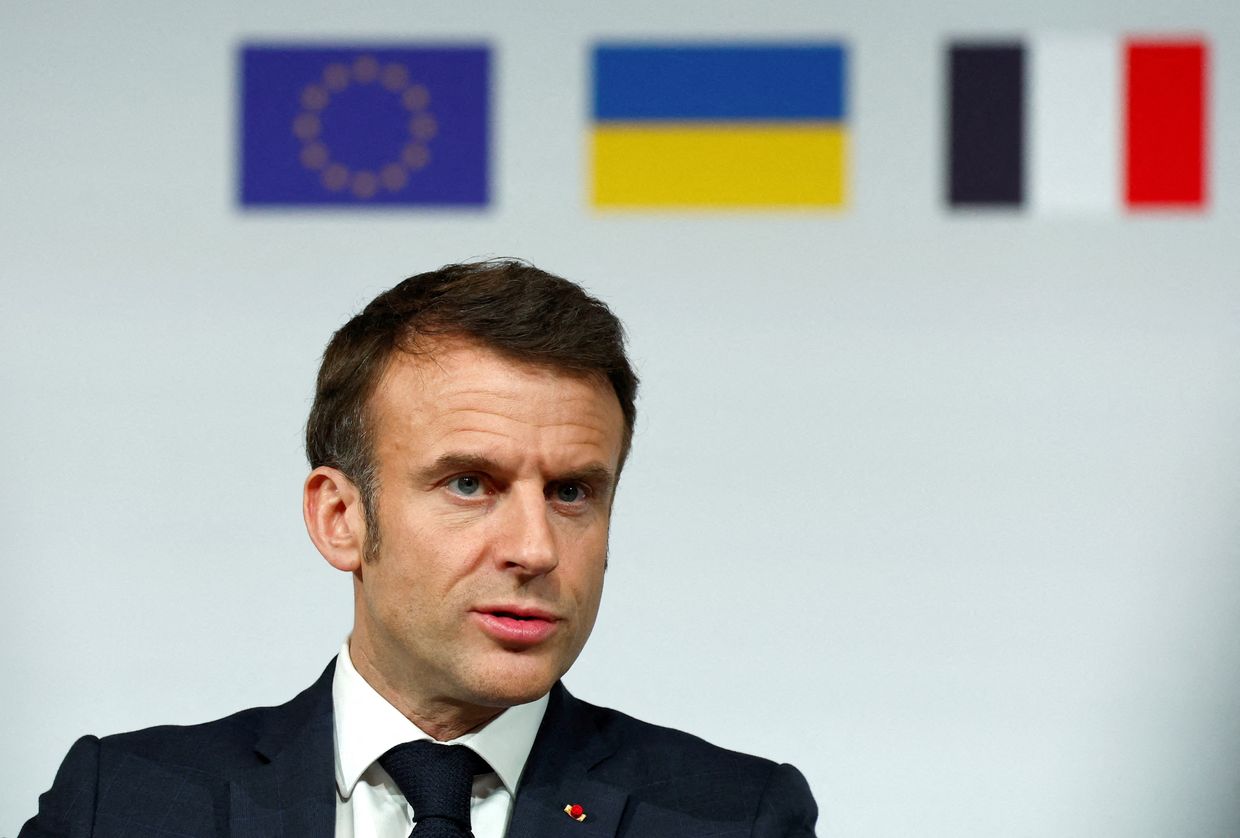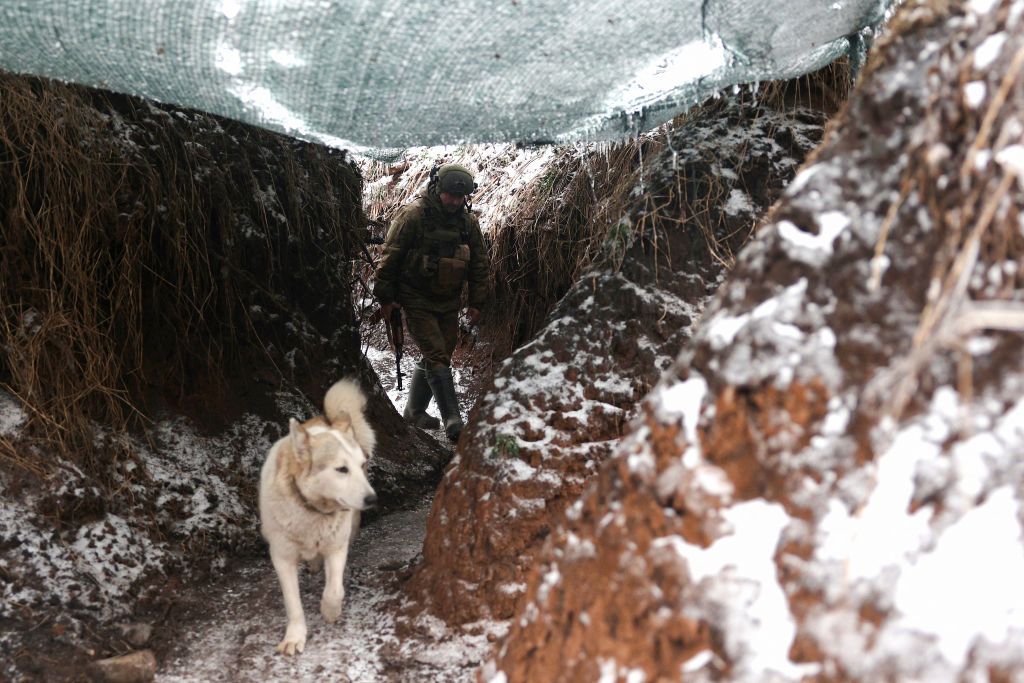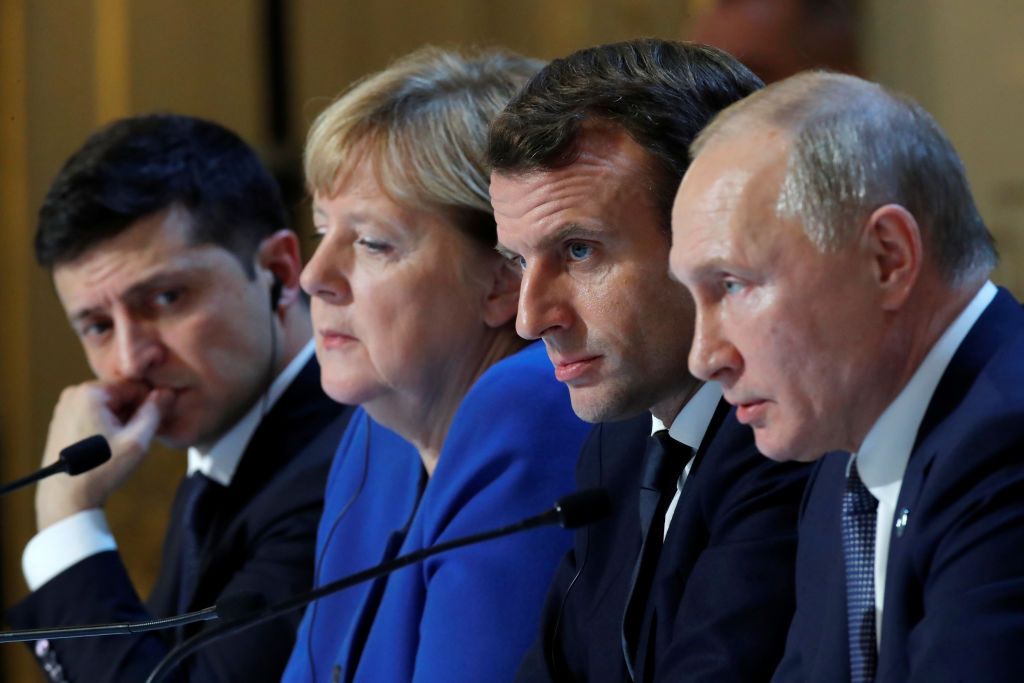Ukraine war latest: US reportedly prepared for potential Russian nuclear strike in Ukraine in 2022

Key developments on March 9-10:
- CNN: US prepared 'rigorously' for potential Russian nuclear strike in Ukraine in 2022
- UK, Italy oppose deploying Western troops to Ukraine
- UK Defense Ministry: Ukraine increasing fortifications along the front line
- Zelensky denounces Pope Francis' proposal to negotiate peace with Russia
- Air Force: Ukraine downs 47 drones in 2 days
- NBC: House Republicans float idea of new Ukraine aid package as a loan
- Ukraine's UN envoy: Russia trying to block maritime corridor through strikes on Odesa.
Washington was “preparing rigorously” for a possible Russian nuclear strike in Ukraine in late 2022, which would have been the first nuclear attack in a war since the Hiroshima and Nagasaki 1945 bombings, CNN reported on March 9, citing two unnamed U.S. officials.
Russia has repeatedly threatened to use nuclear weapons in response to Western support for Ukraine, but the threats have so far failed to materialize. Russia continues to wage an all-out war in Ukraine without utilizing its nuclear arsenal.
The White House was particularly concerned Russia might use a tactical or battlefield nuclear weapon in Ukraine, the officials told CNN.
The U.S. National Security Council held a series of meetings from late summer to fall 2022 to put contingency plans in place “in the event of either a very clear indication that they were about to do something, attack with a nuclear weapon, or if they just did, how we would respond, how we would try to preempt it, or deter it,” said the first official.
“That’s what the conflict presented us, and so we believed and I think it’s our right to prepare rigorously and do everything possible to avoid that happening.”
President Joe Biden’s administration was led to such an assessment not by one indicator but by a combination of developments, analysis, and highly sensitive intelligence, CNN wrote.
The White House’s fear Russia might use a nuclear weapon in Ukraine “was not just hypothetical — it was also based on some information that we picked up,” the second official said.
“We had to plan so that we were in the best possible position in case this no‑longer unthinkable event actually took place.”
One of the arguments in favor of Russian President Vladimir Putin's potential use of nuclear weapons at the time reportedly was Ukraine’s advance on then-occupied Kherson, which Putin claimed was a part of Russia.
The White House was worried that the loss of the city could be a “potential trigger” for Putin to launch a nuclear strike on Ukraine, according to CNN.
UK, Italy oppose deploying Western troops to Ukraine
U.K. Foreign Secretary David Cameron opposed sending Western troops to Ukraine, including for training the Ukrainian military, in an interview with Süddeutsche Zeitung, published on March 9.
Meanwhile, Italian Defense Minister Guido Crosetto emphasized that it is time for diplomacy to lead the path to peace between Russia and Ukraine. He underscored that strong Western support for Kyiv is essential to facilitate meaningful negotiations, according to Reuters.
Crosetto said in an interview with the Italian newspaper La Stampa, published on March 10, that France and Poland lack the authority to speak on behalf of NATO, and any involvement of the alliance in the dispute would "eliminate the path to diplomacy."
The comments came after French President Emmanuel Macron recently said that Western military presence in Ukraine cannot be "ruled out" in the future. The U.S. and multiple European allies, as well as NATO Secretary-General Jens Stoltenberg, have distanced themselves from Macron’s statement.
U.K. Prime Minister Rishi Sunak's spokesperson said that there was a "small number of (British) personnel" in Ukraine who support the country’s military, but that there were no "plans for large-scale deployment" beyond the existing support.
Cameron said that it is better to conduct training missions abroad, adding that London has trained 60,000 Ukrainian soldiers this way.
According to Cameron, deploying foreign soldiers in Ukraine would create additional "targets" for Russia.
"We must avoid creating obvious targets for (Russian President Vladimir) Putin," Cameron noted.
French Defense Minister Sebastien Lecornu said on March 8 that while the deployment of combat troops was not currently being discussed, there was a possibility that Paris would send military personnel to Ukraine to train Ukrainian troops or participate in mine-clearing operations.
Earlier, Canadian Defense Minister Bill Blair also said Ottawa was ready to send a limited number of military personnel to Ukraine, but in "a clear non-combat role."
Polish Foreign Minister Radoslaw Sikorski didn't exclude the potential presence of NATO troops in Ukraine.
During a two-hour State of the Nation address on Feb. 29, Russian President Vladimir Putin threatened "tragic consequences" if NATO troops were sent to Ukraine, claiming the West's support for Kyiv "risks a conflict using nuclear weapons."
Russia has consistently threatened the West with nuclear strikes since it launched the full-scale invasion of Ukraine in 2022.
Ukraine increases fortifications along the front line
Ukraine has “almost certainly” accelerated the construction of defensive fortifications along several areas of the front line, the U.K. Defense Ministry wrote in its March 10 report.
The measures include anti-tank obstacles and ditches, infantry trenches, minefields, and other fortified defensive positions, according to the report.
Further fortifying the front line means that Russian forces can struggle to advance in those areas and achieve any significant tactical gains.
Any effort to push forward in more fortified areas would “highly likely be accompanied by high (Russian) losses,” the ministry added.
Kyiv's stalled counteroffensive in 2023 ultimately didn't result in the desired territorial gains against Russian forces, compelling the Ukrainian military to take a more defensive approach in the latest stage of the full-scale war.
During a press conference in December 2023, President Volodymyr Zelensky replied to a question about fortifications posed by a Kyiv Independent journalist, saying that the most powerful defenses have been constructed in Ukraine's northeastern Kharkiv Oblast.
“When I see this there but not in other oblasts, I ask our military leaders in other sectors concrete questions: Is this sufficient?... And why is this weaker than in Kharkiv Oblast?” Zelensky said.
Zelensky said he had tasked the military with unifying fortifications in various sectors to reach the same standards.
Illia Yevlash, a spokesperson for Ukraine's Khortytsia Operational and Strategic Group, said on Feb. 26 that Kharkiv Oblast's city of Kupiansk, a crucial logistics juncture that was temporarily occupied by Russia in 2022, is coming under renewed pressure by Moscow's troops.
Ukrainian forces have built a line of defense and “powerful fortifications” near the city, “skillfully using the features of the landscape,” Yevlash said on national television.
Zelensky denounces Pope Francis' proposal to negotiate peace with Russia
Pope Francis said that Ukraine should have the courage to negotiate peace with Russia in an interview with Swiss broadcaster RSI recorded in February and made partially available on March 9.
While having repeatedly denounced Russia's full-scale invasion in the past and calling for peace, the Vatican had already come under criticism for the Pope's controversial statements about the war.
During the interview set to be broadcast on March 20, the Pope was asked about his position regarding those who call on Ukraine to surrender and those who say that this move would legitimize the aggressor. The interviewer used the “white flag” analogy in the question.
The Pope called this “an interpretation,” saying: “Don't be ashamed to negotiate before things get worse.”
“I think that the strongest one is the one who looks at the situation, who thinks about the people, who has the courage of the white flag, to negotiate,” he said, adding that peace talks should involve international mediators.
In a statement released following the publication of the interview, the director of the Vatican Press Office, Matteo Bruni, clarified that the Pope didn't call for Ukraine's surrender, but for a ceasefire and negotiations. “His hope is a diplomatic solution for a just and lasting peace,” Bruni said.
According to the Pope, there are many countries that would like to be mediators in the negotiations between Ukraine and Russia. He also confirmed his readiness to participate.
President Volodymyr Zelensky denounced the Pope's proposal in his evening address on March 10. He thanked Ukrainian chaplains for their service, in contrast to those who engage in “virtual intermediation” from “two and a half thousand kilometers away.”
“The Russian killers and torturers do not go further into Europe only because they are restrained by Ukrainians, men and women with weapons in their hands and under the blue and yellow flag. In Ukraine, there used to be many white walls of buildings and churches, which are now scorched and shattered by Russian shells. And this speaks volumes about who exactly should stop for the war to stop,” said Zelensky.
During a visit to Turkey on March 8, Zelensky ruled out his Turkish counterpart Recep Tayyip Erdogan's idea of a peace summit with Russia. “We don't see how we can invite people who block, destroy, and kill everything,” Zelensky said.
Ukraine has repeatedly said that peace talks should be held on the basis of its 10-step peace formula, which includes a full withdrawal of Russian troops from Ukraine. Moscow has rejected this proposal.
House Republicans reportedly float idea of new Ukraine aid package as a loan
House Republicans are working on their own version of an aid bill to Ukraine to speed up the delivery of assistance to the country, with one version including treating nonmilitary aid to Ukraine as a loan, NBC reported on March 9.
Another proposal on the table is the REPO Act which concerns utilizing seized Russian assets for Ukraine.
Using Russian assets, “is a very popular idea in the House,” House Foreign Affairs Chairman Mike McCaul, a Republican congressman from Texas, said.
The proposals are currently in the early stages of development, three sources told NBC, but pro-Ukraine Republicans in the house want something ready before March 22 when another government shutdown is on the line.
The U.S. Senate approved a $95 billion funding package on Feb. 13 that contained $60 billion in aid for Ukraine, but the House under Johnson's leadership has derailed the bill.
Ukraine is already in its third month of the year without any aid from the U.S. as Washington argues over the funding package. The consequences have already been felt, with President Joe Biden blaming Congress for the fall of Avdiivka on Feb. 17.
The idea of a loan may be more appealing to Republicans opposing further U.S. support for Ukraine.
But National Security Adviser Jake Sullivan said last month that a loan isn’t preferential for Ukraine, as it could only “make the economic problems of that country worse,” adding that a stable Ukraine is in Washington’s national security interest.
Republican Senator Lindsey Graham is one of the key figures backing the loan proposal. He claims that the idea came from presidential candidate Donald Trump who suggested a loan on his Truth Social account on Feb. 10.
“I think President Trump when he mentioned a couple of weeks ago that let’s make this stuff a loan, resonates with the taxpayer,” Graham said last week, NBC reported.
“And I think it will make it unlock the House. (…) You may have to add a little more humanitarian aid to get Democrats, but turn it into a loan and maybe we get this thing done.”
Ukraine's UN envoy: Russia trying to block maritime corridor through strikes on Odesa
Russia is trying to disrupt Ukraine's maritime corridor through constant strikes on Odesa, Permanent Representative of Ukraine to the United Nations Sergiy Kyslytsya said on March 8.
The Ukrainian Navy opened a temporary Black Sea corridor in August 2023, weeks after Russia's unilateral termination of the Black Sea grain deal threatened Ukraine's ability to ship out its grain.
Kyslytsya stated that in the time since the shipping route was created, close to 30 million tons of goods have been exported to 42 different countries from the ports of Odesa, Pivdennyi, and Chornomorsk. More than 8 million tons were exported in February alone.
Exports from Ukrainian Black Sea ports have reached nearly pre-invasion levels, Kyslytsya stated.
The corridor was originally opened to allow the exit of vessels that had been docked at Ukraine's Black Sea ports since February 2022.
Since then, it has become a route for exporting Ukrainian goods such as grain and metal. Ukraine is a major agricultural producer, and its supplies play a major role in feeding countries across the world, namely in the Global South.
Despite successful Ukrainian strikes against Russian naval capabilities, Black Sea shipping continues to face risks wrought by the all-out war, namely floating mines.
"Russia's attempts to blackmail the international community by withdrawing from the initiative have failed," Kyslytsia stated. "However, Ukraine... despite the war, launched the maritime corridor and continues to strengthen its effectiveness."
Ukraine downs 47 Russian drones in 2 days
Ukrainian air defense units destroyed 35 of the 39 Shahed-type drones that Russia launched overnight, the Air Force reported on March 10.
The drones were launched from Cape Chauda in occupied Crimea, and Primorsko-Akhtarsk in Russia's Krasnodar Krai region.
Russian forces also launched four S-300 surface-to-air guided missiles. No information was provided by the Air Force as to the outcome of the missile launches.
The drones were intercepted over Kirovohrad, Mykolaiv, Dnipropetrovsk, Cherkasy, Odesa, Kherson, Khmelnytskyi, Vinnytsia, Kyiv, and Zhytomyr oblasts.
Mobile fire groups of the Ukrainian Air Force were involved in repelling the air attacks.
Drone attacks are a daily occurrence in Ukraine, affecting various regions across the country. Overnight on March 9, Ukraine’s air defense downed 12 of 15 Russian drones launched at Ukraine.




















